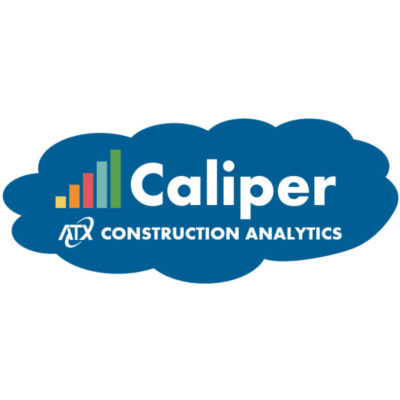There is a lot of buzz about Artificial Intelligence (AI) and people often ask our team what the impact will be to the CDFI industry. AI will create new opportunities and introduce new threats. The businesses that are primed to capitalize on the opportunities will leapfrog their competition while those that are behind will fall further behind. AI is no longer just for larger enterprises; businesses of all sizes can now capitalize on this powerful technology.
Getting started with AI can be daunting, especially for CDFIs with limited resources or expertise. That's why we will be sharing practical insights on our blog to help you get started enabling your business with the benefits of AI. Continue reading to learn more…
Is this all just hype?
We believe that AI will fundamentally change the way CDFIs lend, operate, fundraise, and report on their data. While AI is nothing new, recent advances around access to powerful computer processing and the public availability of generative AI platforms will fundamentally change the way CDFIs operate over the next several years.
There is also a lot of hype and products claiming to be “AI” enabled that are not yet leveraging this next generation technology. There are also a lot of near term opportunities and the pace of change is rapid making AI something that every business leader should be following to understand the impacts on their business.
What are the immediate opportunities?
In the short term, public availability of large language models such as Chat GPT can be viewed as a tool that helps make your organization more efficient. You may also improve effectiveness by having more time available to devote to those activities that require greater skill and nuance which are still not readily available with current technology.
Many of the immediate opportunities to leverage AI focus on research tasks and those activities that require less specific knowledge of your business operations. Use of services such as Chat GPT or Google Bard can significantly reduce the amount of time required to collect information or help to advance and formulate ideas. While you may not leverage the results as finished product, think of these services as providing a jump start on your research the way that internet search engines transformed how people conduct research.
Some short term use cases for CDFIs include:
- Assistance generating content and structure for grant proposals
- Suggestions on alternative formats for documents, images and presentations
- Help writing a difficult email
- Language translation services
What’s next?
In the near future, organizations will leverage these large language models to point at their own data to make a more transformative impact to their operations. This will need to be done in a secure manner through services provided by existing large technology service providers such as Microsoft that are already managing customer data. Microsoft Co-Pilot promises to bring the power of Open AI to the desktop by embedding AI functionality in word and excel. This will provide the ability to prompt Word to suggest content for a paragraph or allow you to ask Excel to analyze data such as a financial statement.
Other near term use cases include:
- Pattern analysis on your data to identify outliers in your data
- Borrower credit analysis
- Personalized technical assistance services
- Portfolio risk rating analysis
- Automated document processing of borrower documents
- AI integration with desktop applications
What are some longer term AI use cases?
- Identify trends and insights not detected by human analysis which will increase opportunities for lending to individuals that did not traditionally qualify
- Increased customer service – 24/7 access to automated services
- Leveraging AI models to process, parse, and aggregate both structured and unstructured data
- Natural language query of your data or creation of reports
What should I be concerned about?
- Employees loading sensitive data to public cloud services for analysis
- Employees relying on output as fact vs. something that requires validation
- External threats from AI such as increases in sophistication of phishing attacks
- Competitors being first to market with advanced products and services
What are some barriers preventing more rapid adoption?
There are several barriers right now to making this a reality and we would not suggest that CDFIs load any sensitive data to public cloud data services. There are services currently being piloted that will allow you to leverage these models pointed at your internal data in a secure fashion.
From an internal perspective, most businesses do not yet have several key components required to enable greater adoption of this technology. Some of the current internal barriers include:
- Access to centralized and trusted data sources
- Pointing an AI engine at low quality data will lead to poor results
- Technical competency required to develop and maintain solutions securely
- Appropriate governance processes to guide development and deployment
What should you do now to start preparing?
- Foster a culture of innovation
The short-term opportunities are available to almost any business. The businesses who are more technology enabled will be able to more easily realize advances on analysis of their own data in a secure fashion, creating opportunities to increase their impact and efficiency.
A significant barrier right now to adoption is that many people are afraid of the technology and don’t know how to get started. Give your team time and resources to explore the use of these tools and services along with some appropriate guidelines to minimize security concerns and validate outputs.
- Prepare your technology environment
How do you enable your business to be ready for this Tech Revolution? We use the framework of the CDFI technology maturity model to help organizations chart their course of efficiently utilizing technology to support their operations. These same principles will allow businesses to be AI enabled as you will be building on a sound technical foundation with appropriate governance in place.
In particular, businesses should focus on these components the be prepared:
- Data Environment: At the core of AI enablement is the need for having a trusted centralized data environment that's accessed securely by employees. Having a data warehouse that collects data from multiple platforms and is efficiently structured will greatly accelerate your AI initiatives. This infrastructure will remove the need to rely on models for interpreting the nuances to your business specific data elements.
- Technology Attitudes and Resource Enablement: Having a team that understands and is not afraid of technology is another core principle of growth on the maturity continuum. Focus on training and allow the team time to explore benefits and risks of AI to your business. Identify a team of AI pioneers to test ideas and concepts and learn new skills to see how they can benefit your business.
- IT Governance: Establish an appropriate framework for managing your technology environment. Be sure the right resources are at the table, add expertise where needed, and keep an appropriate focus on data security.
- Start exploring
Like any new technology, there will need to be learning and some failure before there is adoption. Pick a few uses cases and start exploring. Some immediate opportunities likely exist for research tasks or new ideas about a problem you're trying to solve.
In the short term, we recommend that business get started with AI for short term efficiency gains while building competency and comfort. To get started, we recommend spending some time on ChatGPT to start to see what is possible.
Cheers,
Mark




